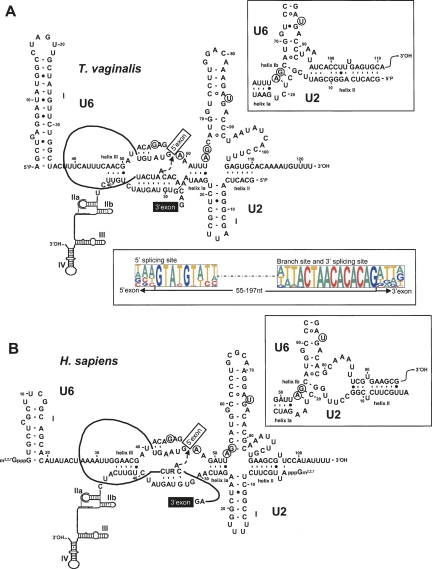FIGURE 2.
Comparison of U2/U6 snRNA interaction models for T. vaginalis (A) and Homo sapiens (B). Spliceosomal T. vaginalis U2–U6 interactions are modeled after those proposed for yeast and mammalian homologs. Nucleotides proposed to be involved in coordination of metal ions required for catalysis (Fabrizio and Abelson 1992; Yu et al. 1995) are circled. The numbering of nucleotides and helices are indicated. The intron sequence from poly(A) polymerase pre-mRNA (Vanacova et al. 2005) and generic splice site and branch site sequences are incorporated in the T. vaginalis and the H. sapiens models, respectively. The U2/U6 snRNA conformation that allows for an extended U6 intramolecular stem–loop (ISL) proposed to form during the first step of catalysis is shown on the left; the inset on the right shows the proposed second step conformation that allows for formation of helix Ia and Ib. The nucleophilic attack by the branch-site adenosine during the first step of splicing is marked by an arrow. A consensus of the 5′SS, branch site and the 3′SS in identified T. vaginalis introns (Carlton et al. 2007) are shown below the T. vaginalis U2/U6 structure.

